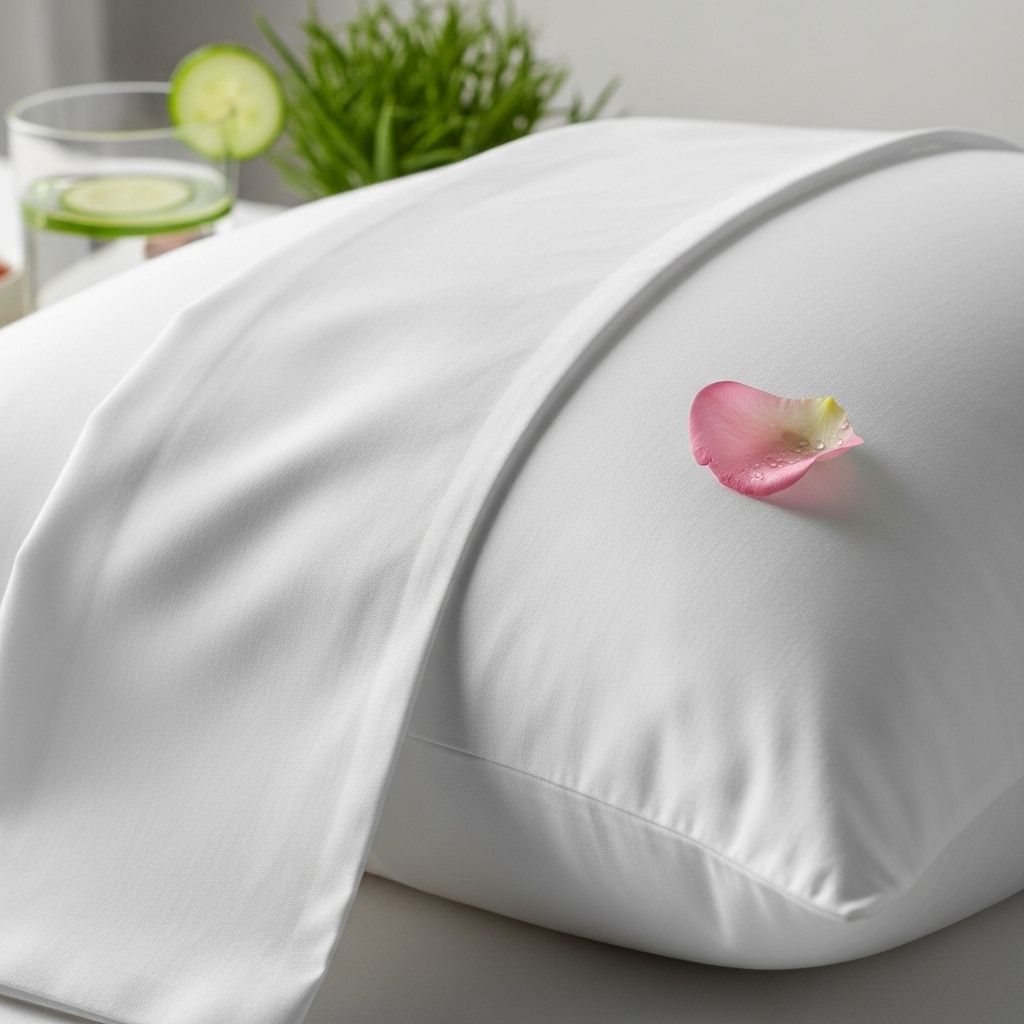Pillowcase Hygiene for Clear Skin
Fresh sleep covers each week help prevent breakouts and calm facial irritation.

Table of Content
- Introduction to Pillowcase Hygiene
- Importance of Pillowcase Hygiene
- How to Maintain Clean Pillowcases
- Choosing the Right Pillowcase Material
- Frequently Asked Questions
Introduction to Pillowcase Hygiene
Skincare routines often focus on applying the right products and following specific treatments. However, one of the most overlooked aspects of achieving clear, healthy skin is pillowcase hygiene. Your pillowcase comes into direct contact with your face for several hours each night, making it a breeding ground for bacteria, oils, and dead skin cells—all of which can significantly impact the health of your skin.
Importance of Pillowcase Hygiene
Understanding the importance of pillowcase hygiene is crucial for maintaining clear and healthy skin. Here are some key reasons why regular pillowcase changes are essential:
- Bacterial Buildup: During the day, your skin accumulates various bacteria and germs. When you sleep, these bacteria transfer to your pillowcase. If not changed regularly, this buildup can lead to acne and irritation by reintroducing bacteria onto your skin every night.
- Oils and Sweat: Your skin naturally produces oils, and at night, your body sweats. These oils and sweat accumulate on your pillowcase, creating an environment conducive to bacterial growth. This can clog pores and exacerbate acne-prone skin.
- Dead Skin Cells: Each night, your skin sheds dead cells, which end up on your pillowcase. If not cleaned regularly, these dead skin cells mix with oils and bacteria, potentially leading to breakouts and dull-looking skin.
- Allergens: Dust mites and other allergens can accumulate in pillowcases, irritating sensitive skin and potentially causing allergic reactions. Regular laundering helps keep these allergens at bay, contributing to healthier skin and better sleep quality.
How to Maintain Clean Pillowcases
Maintaining clean pillowcases is straightforward and essential for skin health. Here are some tips to follow:
- Regular Washing: Dermatologists recommend changing pillowcases at least once a week. This frequency is particularly important for individuals with acne-prone or sensitive skin.
- Use Gentle Detergents: Opt for fragrance-free, gentle detergents that won’t irritate your skin further when transferred during sleep.
- Dry on Low Heat: To prevent shrinkage and maintain fabric quality, dry your pillowcases on low heat.
Choosing the Right Pillowcase Material
The material of your pillowcase can significantly impact your skin health. Here’s a comparison between common materials:
Cotton vs. Silk Pillowcases
| Material | Description | Impact on Skin |
|---|---|---|
| Cotton | Absorbs oils, sweat, and skincare residue, creating a warm environment where bacteria thrive | Can exacerbate acne and irritate skin due to friction and bacterial buildup |
| Silk | Naturally antibacterial, non-absorbent, and hypoallergenic, supporting hydration and reducing friction | Helps prevent breakouts, maintains moisture balance, and supports a healthier skin barrier |
For those interested in maximizing skin benefits, investing in a silk pillowcase, particularly one with antimicrobial properties, can be advisable. Silk not only keeps your skin cleaner but also supports hydration and reduces friction, making it gentler on the skin compared to cotton or synthetic materials.
Frequently Asked Questions
Q: How often should I change my pillowcases?
A: It is recommended to change your pillowcases at least once a week to prevent the buildup of bacteria, oils, and allergens that can affect skin health.
Q: What is the best material for a pillowcase if I have acne-prone skin?
A: Silk is often recommended for acne-prone skin due to its natural antibacterial properties and ability to maintain a clean, balanced skin environment without absorbing oils or sweat.
Q: Can using a silk pillowcase help with skin hydration?
A: Yes, silk pillowcases can help maintain moisture levels in the skin, as they do not strip away natural oils like some other materials might.
References
- https://www.purejoyskincarewaxstudio.com/blog/the-surprising-impact-of-pillowcases-on-your-skin-why-regular-changes-are-essential
- https://www.finallyallnatural.com/blogs/news/the-impact-of-pillowcase-hygiene-on-skin-health
- https://blissy.com/blogs/the-blissy-blog/how-a-silk-antibacterial-pillow-case-can-help-your-skin
- https://rest.com/blogs/sleep/pillowcase-for-acne-skin
- https://www.westlakedermatology.com/blog/best-pillowcase-for-healthy-skin/
- https://www.refinery29.com/en-gb/changing-pillow-case-often-clear-skin
- https://cleanskinclub.com/blogs/the-scoop/6-reasons-why-you-need-an-antibacterial-pillowcase
- https://www.sleepfoundation.org/best-sheets/best-pillowcases-for-acne
Read full bio of medha deb












